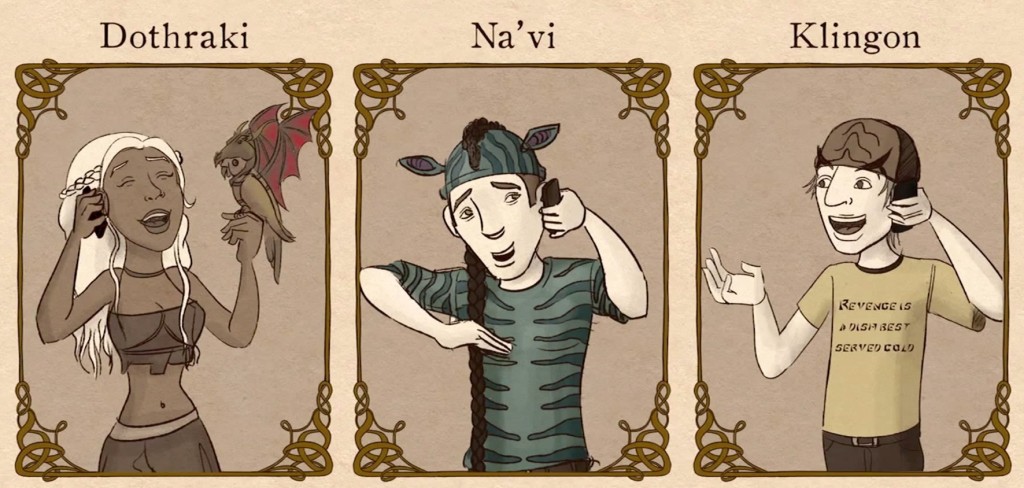This is the first of three posts on how to improve the use of languages in constructed worlds. Part 2, directed to the constructed language community, is here, and part 3, guidance for authors in working with conlangers, is here.
Writers of fantasy and science fiction have many world-building responsibilities. We have to create and populate worlds, landscapes, ecologies, technologies, cultures, history, and all the myriad of things that go with that. Whether our story is set in the near future, in a galaxy far, far away, or in a place that could never exist, our stories are immersed in a background that must seem rich, plausible, and historically deep — like the real world we live in.

Many of us play at amateur world-building with maps we hope are not geologically ridiculous, with alien ecologies we hope make some sort of evolutionary sense, and with interactions between cultures that we trust convey some of the flavor of a fictional reality. We look up a few bits of knowledge, here and there, and get a boost from a friend who can critique starship engines re: physics. All of this is done to make us seem like plausible experts for the purposes of our stories, so that we don't create inanities that pull the readers out of the story (at the very least) and so that we can convey a sense of depth and inevitability and interconnectedness for our story world (at the best).
One of those important threads is language. Most of us are not, unfortunately, historical linguists. In fantasy and science fiction, creating the verisimilitude of cultural depth is a large and fundamental requirement, and most of us are not qualified to fake the linguistic part of that.
We've all read fantasies where the personal names are ridiculous, mixtures of syllables from RPG name generators and ordinary everyday names, with implausible apostrophes and incoherent spellings. These are the equivalent, for some readers, of the lousy book covers we all wince at. Even readers who don't quite understand what the problem is can sense something wrong. And when we start to supply place names, artifacts, and other bits of other languages, the opportunities for maladroit handling just increase. We're not (alas) Tolkien who created entire language families before ever writing the world that used them.
The good news: there are people who do this for fun and profit. The art is called “conlang” (CONstructed LANGuage), and the practitioners are conlangers.
As authors, we don't necessarily need full real languages in our world-building. But sometimes things happen…
David Peterson instantiated Dothraki and Valyrian for HBO's Game of Thrones from George R R Martin's two phrases and a few dozen names, so that actors could actually use the languages in dialogue. Full languages. I recommend Peterson's book, The Art of Language Invention, for anyone with an interest in how languages evolve, how writing systems impact language, and how sounds are produced.
 Think that aliens produce the same sounds we do with different speech production structures? Think again.
Think that aliens produce the same sounds we do with different speech production structures? Think again.
What's the impact of writing systems (implements, symbols) on language? What does a library look like if everyone writes on palm leaves, clay tablets, papyrus scrolls, cross-hatched sticks, knotted threads? Or different cultures use different media? We may not want to include actual images and fonts in our stories for technical reasons (images on ereaders being problematic), but the actuality of the writing systems should have an impact.



So, how can we make our use of languages in constructed worlds better?
I propose we look to the conlang community for assistance, the same way that we do for cover artists and editors. My next article in this series is addressed to conlangers, explaining to them what we need, and the final article speaks to authors, helping them understand how we can work together.


[…] the use of languages in constructed worlds. Part 1, an introduction of the topic for authors, is here. This part is addressed to folks who invent CONstructed LANGuages: […]
[…] the use of languages in constructed worlds. Part 1, an introduction of the topic for authors, is here. Part 2, an exploration for conlangers (the folks who invent CONstructed LANGuages) of what authors […]
[…] can read at length here about how people who create CONstructed LANGuages (Conlangers) are organized and how they view […]